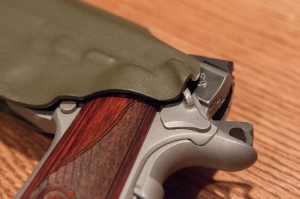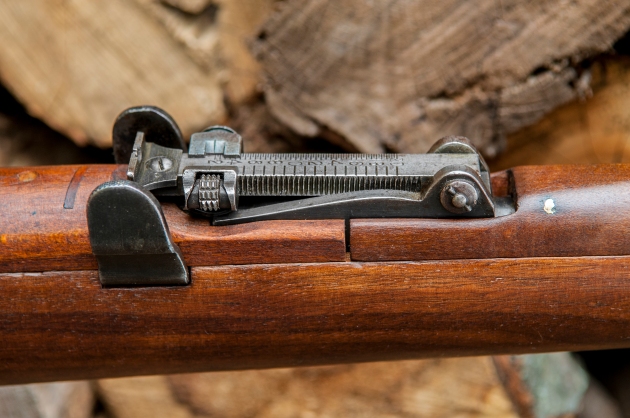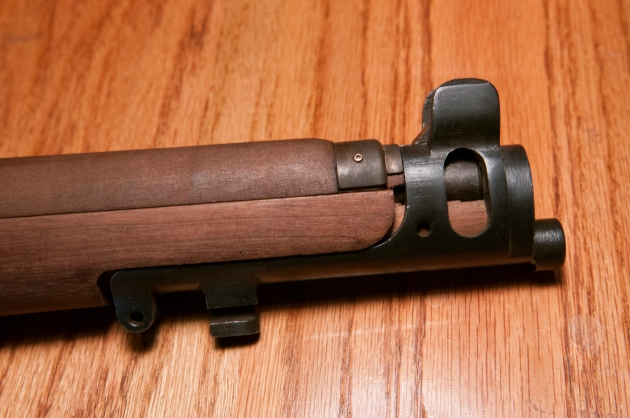Extreme Restoration – Coleman 10 Gauge Shotgun
December 17, 2014 8 Comments
This old Coleman 10 gauge shotgun has been in my family for over 100 years, originally belonging to my great-grandfather. When I was growing up, I remember seeing it in the “meat house” on my grandmother’s farm. The meat house was really nothing more than a shed, a precarious structure that had a dirt floor and a pretty serious lean to one side. Even then, the gun was little more than rust and bleached wood. In the late 1970s, out of safety concerns, the meat house was emptied and demolished (actually, a couple of us just gave it a good push and it collapsed). The shotgun was one of the many items removed and it found a new home in my parent’s attic. There it stayed for another 30 years until my mom finally sold her house and moved into a senior home. The gun was passed around a little over the last 8 years until finally finding its way back to me earlier this year.
I wasn’t able to find out anything about the Coleman brand, and assume it was one of the many mail order or hardware store branded guns available back around the turn of the 20th century. Many of these were inexpensive imports, usually from Belgium. As you can see in the photos, the gun was in pretty bad shape, with decades of exposure and rust damage. It was also missing both hammers. I’m not a gunsmith, but it was clear that this gun would never shoot again. Still, being a family piece I figured it might be restorable as a wall hanger. With little to lose, I dove in.
The first order of business was disassembly. This proved more difficult than I had hoped. I was able to remove the side panels but a couple of key screws were completely frozen, making the rest of the action inaccessible. Believe me, I tried every trick in the book. There was just too much rust and some parts were simply fused together. Someone long ago tried to take the lever lock assembly apart to fix it and really buggered the whole thing up, even bending the lever. The wear on the lever’s locking mechanism was severe, and the lever is so loose it just flops around.
Cleaning up the barrels was relatively straightforward. I removed the rust using a soft steel wheel brush on a large powered grinder, finishing up with more brushing by hand. You see in the photo below the pitting from years of rust and neglect. I applied a little cold blue to darken the metal to approximate a pretty nice looking aged patina. Although the photo flattens it out, there’s actually a pretty nice luster to the metal. There was one small dent at the very end of one barrel that was easy to hammer out using a wooden dowel and a nylon hammer. I ran a brush and then a rag through both barrels to clean out the loose rust.
Since I couldn’t separate the stock from the receiver thanks to one extraordinarily frozen bolt, I just had to do the best I could with it all in one piece. I managed to remove the action on both sides, despite one screw with a broken head. The actions were in surprisingly good condition compared to the rest of the gun. I cleaned up the rest of the receiver and trigger guard as much as possible. The damage to the metal was fairly severe so there were limits as to just how much I could do.
The stock had just a few trace spots of the original finish, and suffered from prior water and insect damage as well as some chipping around the receiver. I gave it a good scrubbing with mineral spirits and then applied several coats of Watco oil finish. I used a combination of both walnut and mahogany tints to get the color I wanted. The reddish mahogany adds a little warmth that I like.
With the action cleaned and oiled, I reassembled everything, made a screw to replace the one that was broken. And when I say make, I mean I took a screw of comparable size, shaped and finished it to match the original as close as possible.
Since the gun was missing both its hammers, I had to source replacements. This would have been a more critical endeavor if this were a shootable gun, but being a wall hanger, I only needed hammers for cosmetic reasons. I searched for vintage hammers, but finding a matched pair that were the right size was difficult and I didn’t want to spend a lot. I ended up ordering a new pair from Dixie Gunworks. Being new castings, they required a considerable amount of work filing, drilling, sanding and polishing. Given the condition of the rest of the gun, I didn’t go overboard making them look perfect. I debated whether or not to blue them and in the end went ahead. I like the contrast with the rest of the receiver. Attachment to the gun appeared to be friction fit. I have no idea if this was how the originals were attached, but the posts (or whatever you call them) were solid. So friction fit them I did. I filed them for a tight fit and pounded them on using a wooden dowel to protect the finish.
All in all, considering the condition when I started, I think it turned out pretty well. It’s still a rough looking piece, but it looks a darn sight better than when I started, and at least now is presentable enough to hang somewhere.
***






































